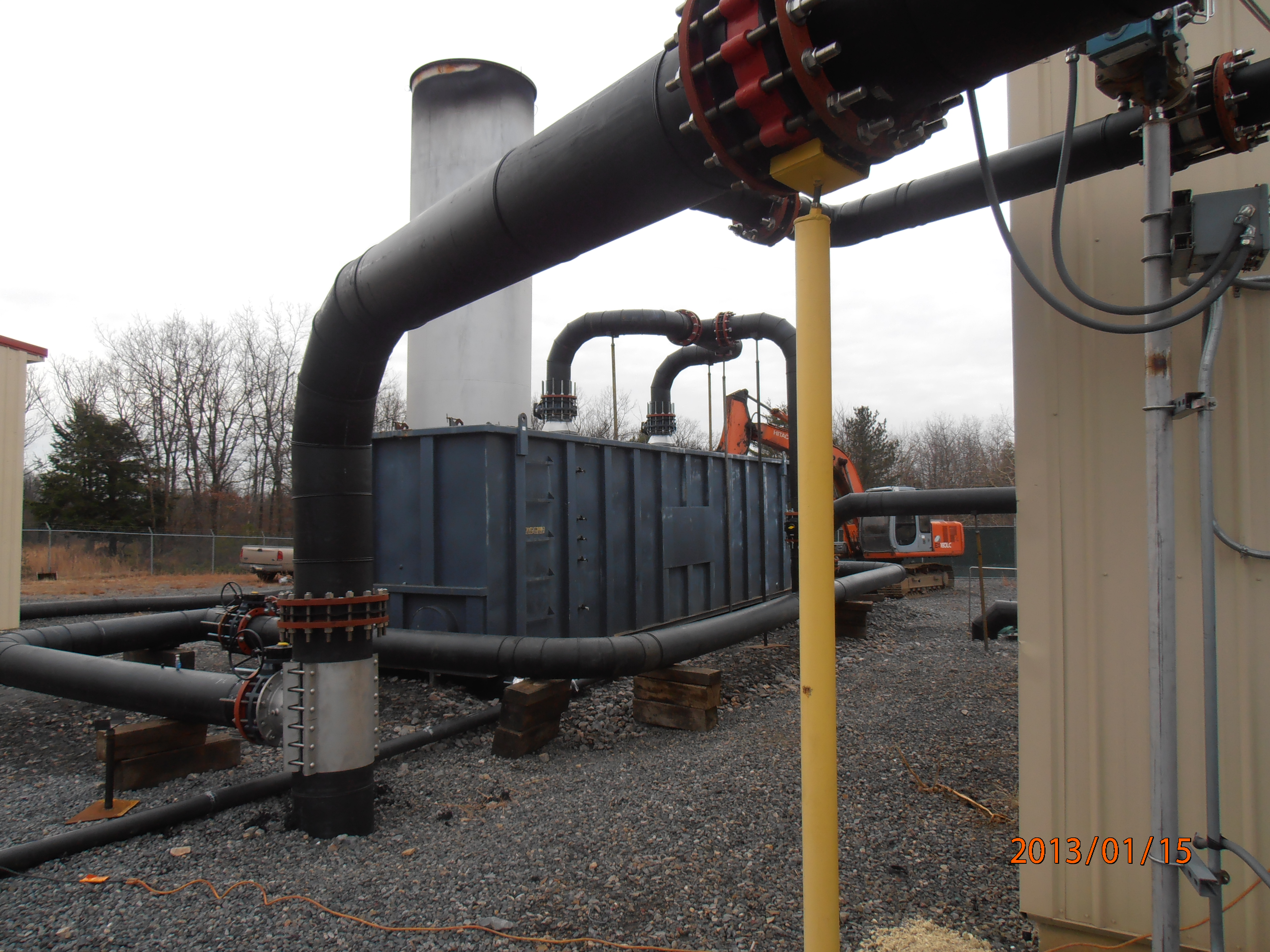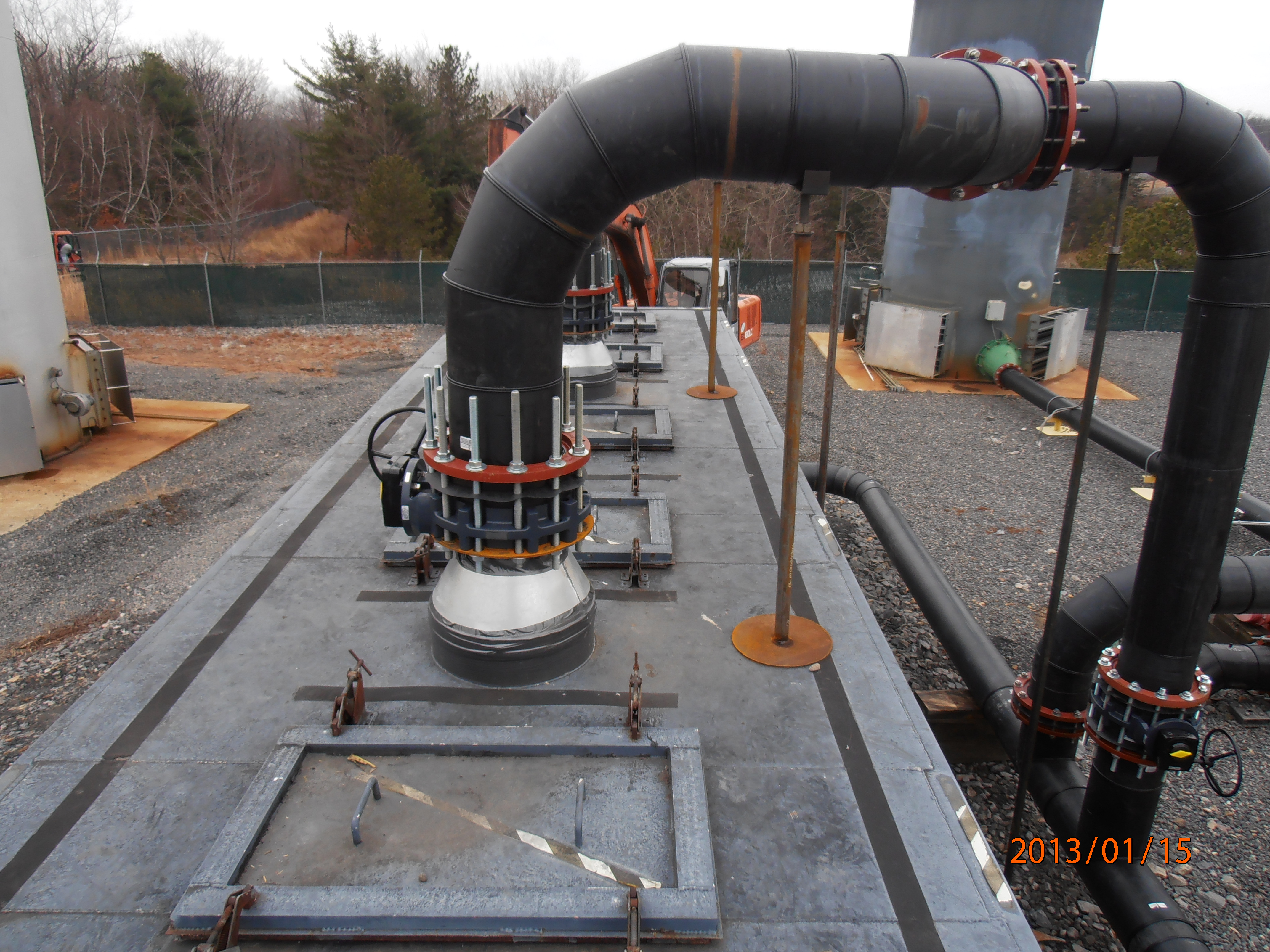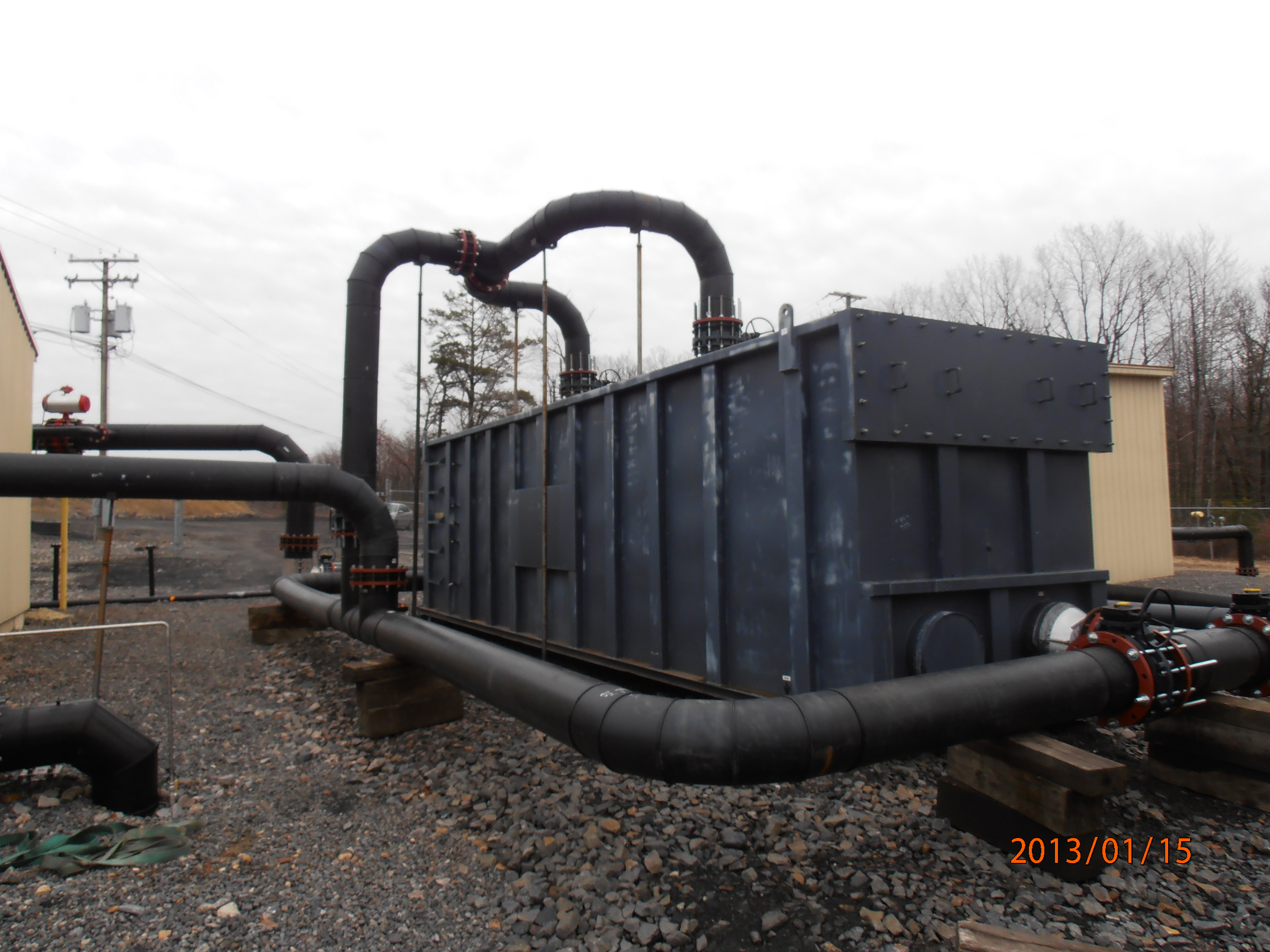Location: Northern PA Landfill

Project Summary:
Theia was contacted late in 2012 by a small engineering firm which was helping a large landfill in Northeastern PA. The landfill is extracting 4000 cfm of methane and other gases from the landfill and sells the gas to a regional utility energy partner which uses the gas to drive two(2) turbines. The landfill was hitting its regulatory limit on SO2 (sulfur dioxide), which results from burning gas which contains sulfide compounds and needed a solution quickly. Their gas customer had already arranged to purchase an MV Technologies (iron sponge media) system to address the H2S but would not have that system in place for at least another 9 months (it actually took over 12 months). Thus, they needed a short term solution and they needed it quickly.
Initial gas flow 4000 cfm. Initial H2S levels 900 ppmv. Required discharge: 50 ppmv
In addition to their regulatory issues, the H2S was creating operational issues for their gas customer’s equipment, including increased maintenance and corrosion. Theia recommended their new media which removes 50-60% by weight H2S, needs minimal contact time (can use smaller vessels) and does not clump or solidify. A small pilot test (1 week) confirmed the efficiency of the media and gas parameters.
A full scale vessel and manifold system was installed within 3 weeks of Theia receiving a go ahead from the customer. The system includes a treatment vessel which has two(2) independent gas treatment beds, each capable of treating the required gas flow of 4000 cfm. Theia provided the customer a design for a manifold which allowed the customer to operate the two(2) media beds in series as well as isolate them for service as well as to change the lead/lag position for the treatment beds. Due to the tight timing, the engineering company worked with the landfill personnel to weld and connect the manifold using 12 inch HDPE pipe and valves.
Theia media, while tested at the site, was still unproven and would mark the first use of an activated carbon media in either digester or landfill gas applications. Thus, the landfill asked for a performance guarantee which Theia was willing to provide. The system not only met its mark but went far beyond the promise and allowed the customer to operate for the next 11-12 months without issue. The media was changed out a few times over the operating period and the changeout was performed quickly and easily and without any safety or disposal issues. The Gas Utility eventually took over operation of the system as the time got closer for them to start up their MV Technologies system.
After seeing Theia’s treatment system in action, the Gas Utility customer stated that they regretted their decision to purchase the MV Technologies system. Theia’s system operated flawlessly for 11 months and was then demobilized once the MV Technologies system was installed and tested.
However . . . The story did not end there.
Almost immediately, issues arose with the MV Technologies system. Performance was unsteady and the system required regular additions of water which created some operational concerns. The operations staff contacted Theia not long after the system was installed asking if our media would be effective if we installed it into the vessels which they had purchased. It would take a bit longer to convince management to make the change. They had invested a lot of money in the MV Technologies system and were not so keen on abandoning that investment which we certainly understood.
Eventually, the issues with the MV system and the constant requests from the operating team finally convinced management to look at making a change. Operations got permission to install a slip stream test capability to allow them to prove out the media once again. The gas conditions had changed and we would now be treating the gas in a different location.

The following were just some of the the challenges that the customer faced while operating the MV Technologies system.
Iron Sponge media solidifies over time:
-Creating channeling which causes the gas to bypass some of the media.
-The solidification also blocks water distribution causing some areas to retain water and others to be dried out.
-These issue causes the media to “break though prematurely” and causes the pressure drop to go up over time.
-Creating large very hard chunks which are very difficult to remove. Removal service costs many times more than the media itself. This service requires the service crew to enter the treatment vessel to break up these clumps before they can be removed, creating safety issues for personnel.
The MV Technologies system included six(6) 14 foot diameter fiberglass vessels (In comparison, Theia’s temporary system used one(1) 40 foot long x 8 foot wide steel box unit to treat the same flow of gas).
-In order to replace the media, the tops of the vessels needed to be lifted off the vessels. This step alone required the removal of 100 or more bolts around the circumference of the vessels. The top then needed to be lifted off and placed down somewhere.
MV presents a “solution” to the clumping issues through use of a special “net”. A large volume of media is placed into these “nets” and the media is lowered into the media vessel. This idea creates additional operational issues for the operator.
-As stated above, in order to utilize the nets, the entire top of the vessel must be removed.
-The media must be loaded into these nets on site which requires time and labor from the customer.
-Once loaded into the vessels, the media may be restricted by the nets and not make contact with the vessel wall in the same manner that loose media would do.
-Once loaded the nets are quite heavy requiring a machine large enough to lift several tons and move it into the center of the vessels and lower into the vessels.
-In actual use, the straps on the nets or the nets themselves tear when the customer attempts to remove the media from the vessel. Once that occurs, the customer is now dealing not only with the chunks of media but also with the nets which can make removing the media even more difficult.
-Even when successful, this design requires the operator to pull out and place in large heavy objects suspended overhead and service technicians working below it. in order to “hook “the lower layers, a technician must often enter the vessel and secure the lifting apparatus to the net.
At this site, upon the first attempt, these nets failed and the customer needed to remove the media using an excavator. This step required plunging the shovel of the excavator into the media while taking care not to make contact with the tank itself which would have torn the vessel. The customer was fortunate to have very skilled personnel who could operate the machine with sufficient skill and precision to allow them to complete these service events. The customer also had to enter the vessel to cut away the nets in order to allow the excavator to shovel the media out.
Even after the spent media is removed, the challenges did not stop. The media needed to be laid onto tarps and continuously wetted down to avoid fires. The media was tested and considered to be hazardous waste and a long waiting period before the customer was able to secure a facility where they can dispose of the media properly.
Theia worked with the gas customer to retrofit the MV system to allow it to be more effective and efficient once they put Theia’s media into the vessels. Changes included proper manifold design and reconfiguring the manifold to allow for some of the vessels to be operated in series. Another large change was the installation of manways on the vessels which allowed for changeout of the vessels using a vacuum truck and without having to remove the tank covers.
Theia’s media has been in the vessels since that time and the customer has been very pleased with the performance. The media has performed as well or better than promised despite climbing H2S levels. The media has been replaced a few times without issue using a standard vacuum truck and an excavator or telescoping lift to raise the 1000 pound supersacs of media over the manway to refill the bed.







